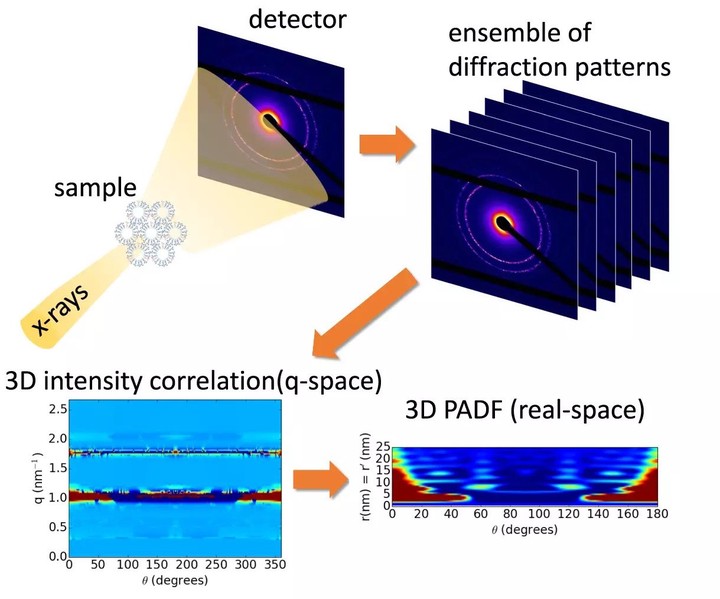Fluctuation X-ray diffraction reveals three-dimensional nanostructure and disorder in self-assembled lipidphases

Abstract
Emergent nanoscale order in materials such as self-assembled lipid phases, colloidal materials and metal-organic frameworks is often characterized by small-angle X-ray scattering (SAXS). Frequently, residual disorder in these materials prevents high-resolution 3D structural characterization. Here we demonstrate that angular intensity variations in SAXS patterns can provide previously inaccessible information about local 3D structure via a rich, real-space distribution of three- and four-body statistics. We present the many-body characterisation of a monoolein-based hexagonal phase doped with a phospholipid, revealing non-uniform curvature in the lipid channels, likely due to phase separation of the lipids in the membrane. Our many-body technique has general applicability to nanomaterials with order in the range 10 nm−1 μm currently targeted by synchrotron SAXS and has the potential to impact diverse research areas within chemistry, biology and materials science.